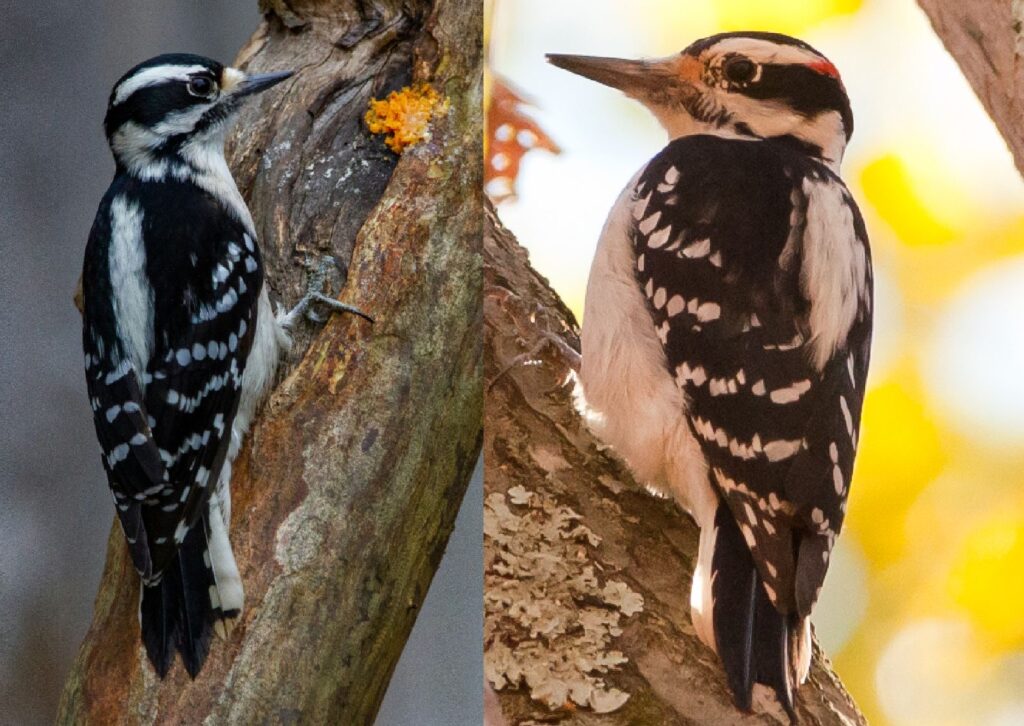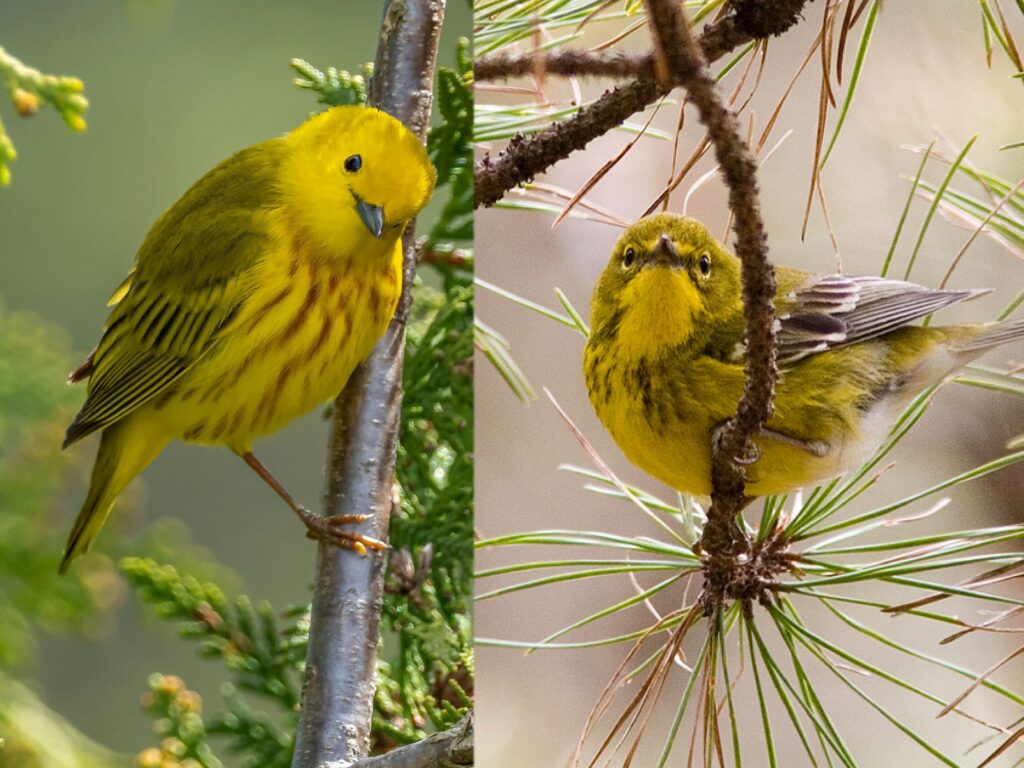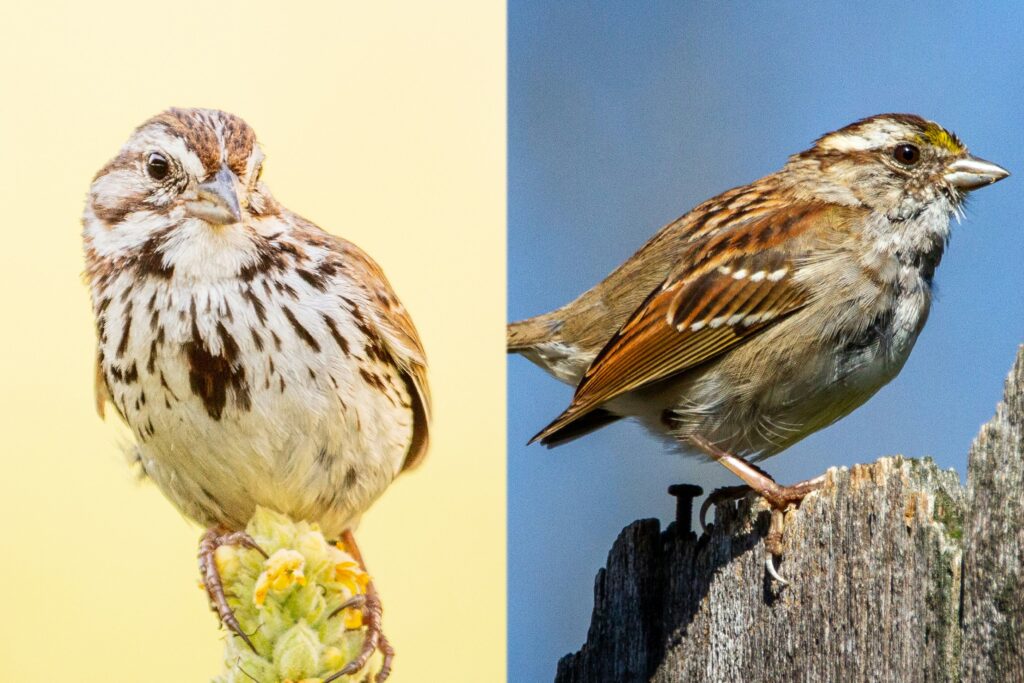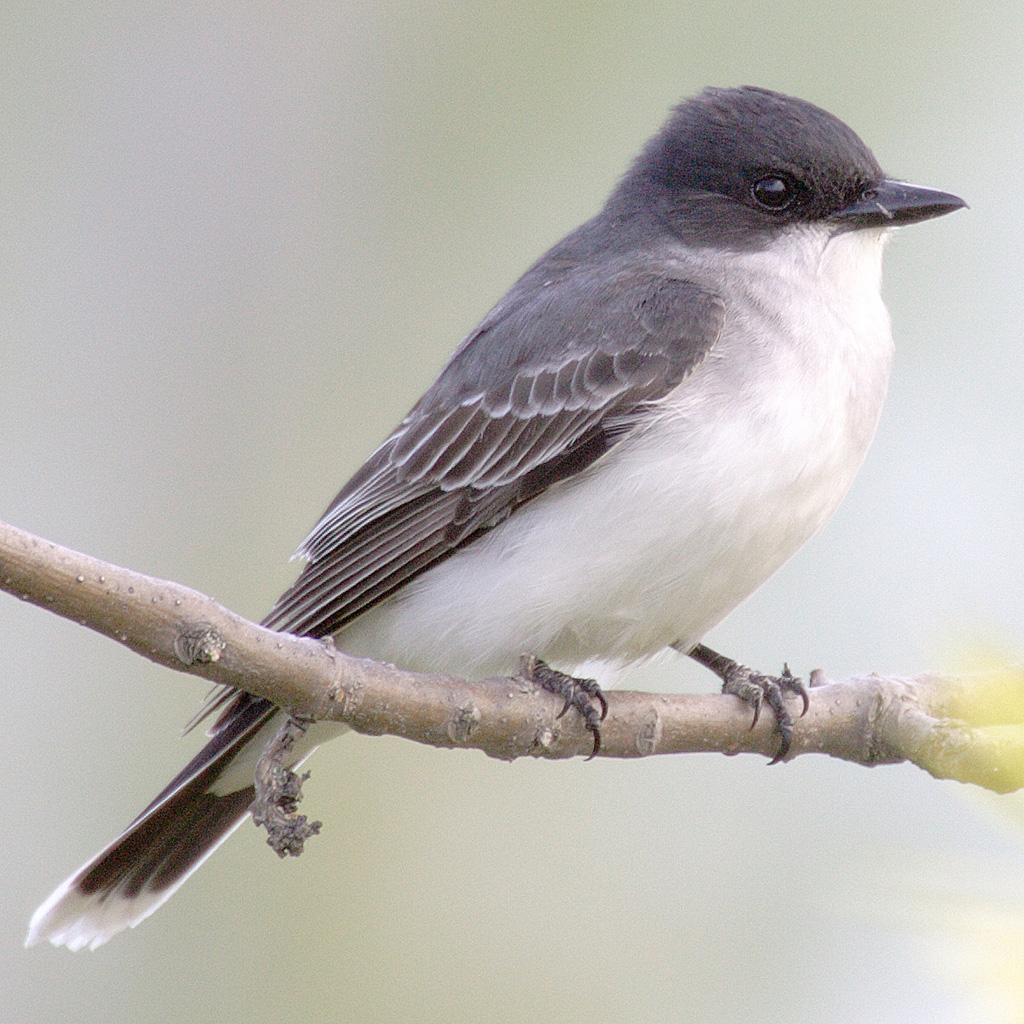For many, birds are the highlight of their time in the Pine Barrens. Yet, even after years of casual birding, it can be difficult to distinguish certain species from one another. That is, of course, if you don’t know what traits to look for. Here, I’ll present for your viewing pleasure some of the more confounding common birds, and how I’ve learned to tell them apart after four years of birding.
Downy and Hairy Woodpeckers
Let’s start with a deceptively simple one. At a glance, the Downy and Hairy Woodpeckers look like they’re the same species, especially at a distance. While the animal’s overall size is usually a good clue as to what species you’re looking at, there are times when this just won’t cut it. The smallest Hairy and the largest Downy could easily appear to be one another! When you’re unsure, the easiest solution is to look at the size of the bird’s beak, and more specifically its size in relation to the animal’s head. If the beak is much smaller than the bird’s head, it’s a Downy. If the beak is as long as or longer than the bird’s head, it’s a Hairy!

Left: A Downy Woodpecker. Right: A Hairy Woodpecker. Photo Credits: Joshua J. Cotten (via Unsplash) and Daniel D’Auria
Yellow and Pine Warblers
Did you know that many of the most common warblers you’ll see around Long Island all belong to the same genus. Yellow, Pine, and Yellow-rumped warblers, among others, all belong to the genus Setophaga. For reference, when we talk about dinosaurs, we generally only refer to an animal’s genus, as distinguishing between species is often too difficult! This holds true with modernity’s warblers, which often possess similar, if not identical, silhouettes. However, with decent lighting, most of the more common species are simple enough to distinguish from one another thanks to their varied plumage patterns. Even with the often-extreme sexual dimorphism present in many warblers, the males and females of a given species are often distinct from any other species you’ll find in a similar habitat (though the drabber females will likely require a closer look to properly identify). However, Yellow and Pine Warblers are an exception to this: they’re both predominantly yellow in coloration and possess darker wings and streaks on their bellies. Ultimately, there are three key features you can use to distinguish the birds. First, are their wings. While Yellow Warblers’ wings are generally darker in coloration than the rest of their body, they’re not the pure gray that Pine Warblers possess. Furthermore, Pine Warbler wings feature distinct white wing bars. Second, the streaks on Yellow Warbler bellies are much clearer and more pronounced than those of the Pine Warblers, which are often smudgy. Finally, Pine Warblers have black eye-lines that, while fainter in color, connect their eyes and their beaks.

Left: A Yellow Warbler. Right: A Pine Warbler. Photo Credits: Patrice Bouchard (via Unsplash) and Fritz Myer
Sparrows
Unlike warblers, which generally each possess distinct coloration or plumage patterns, most sparrows you’ll find on your hikes will be shades of brown, will have some sort of eye line, and will likely have streaks on their bellies. Dark-eyed Juncos and Eastern Towhees are an exception to this, but often you’ll have to rely on traits other than plumage to determine what you’re looking at. Size is useful for identifying Fox Sparrows (large) and Chipping Sparrows (small) but in isolation it can be challenging to place what you’re looking at in perspective with other sparrows you’ve seen. Thus, size is most useful when multiple species are present at the same time.
Habitat is also a clue – you’re unlikely to see a Swamp Sparrow in the heart of the Pine Barrens, after all! When it comes down to it, the most similar sparrows in terms of plumage, habitat, and size are the Song Sparrow and the White-throated Sparrow. Although the latter’s name might suggest a simple way to distinguish the two, this isn’t always the case. Juvenile White-throated Sparrows possess less distinct white throats, to say nothing of natural differences in pigmentation. Not every bird you’ll see out in the field looks like the picture-perfect specimen in your field guide or on the Merlin app. Thus, the most important thing to remember is that Song Sparrows possess very clear and distinct streaks on their belly, and often feature a single, most prominent streak on their centers. Additionally, White-throated sparrows migrate away from the Island during the warmer months, so if it’s the middle of July, you’re not likely to see them.

Left: A Song Sparrow. Right: A White-Throated Sparrow. Photo Credits: Matthew Schwartz and Joshua J. Cotten (both via Unsplash)
Hopefully this brief guide will help you to identify birds and enjoy this incredibly exciting and enriching hobby. From your own backyard to the Shoreham Forest, you can find birds of all shapes and sizes across Long Island, if only you choose to look for them. Happy Birding!
By Travis Cutter, Long Island Pine Barrens Society


